It's green black walnut season. I don't know how people figured out you could use unripe walnuts in cooking, but I'm sure glad they did, and after you try making fermented green walnut molasses recipe, I think you will be too, even if you don't like the taste of black walnuts cracked from the shell.
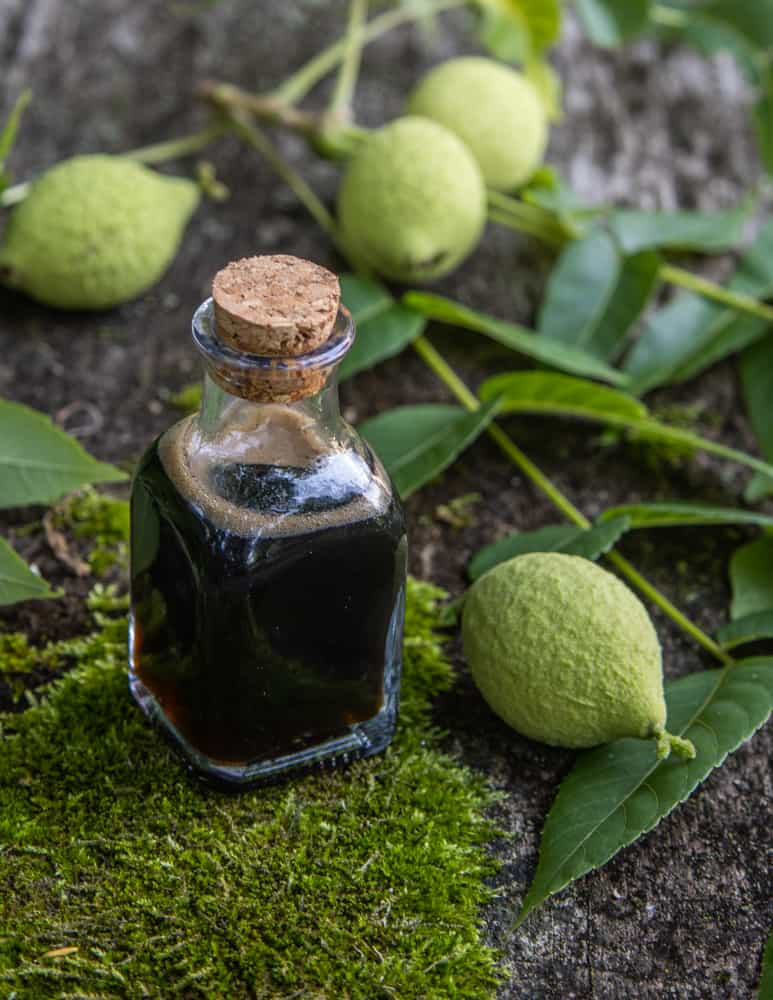
Unripe black walnuts are pretty well known in the wild food community, and I think It's a pretty good bet that's mostly due to the popularity of Nocino, the Italian black walnut liquor (Vin de Noix is the French cousin that includes red wine in the maceration, and I actually prefer it to nocino. The recipe for my Vin de Noix is in my book).
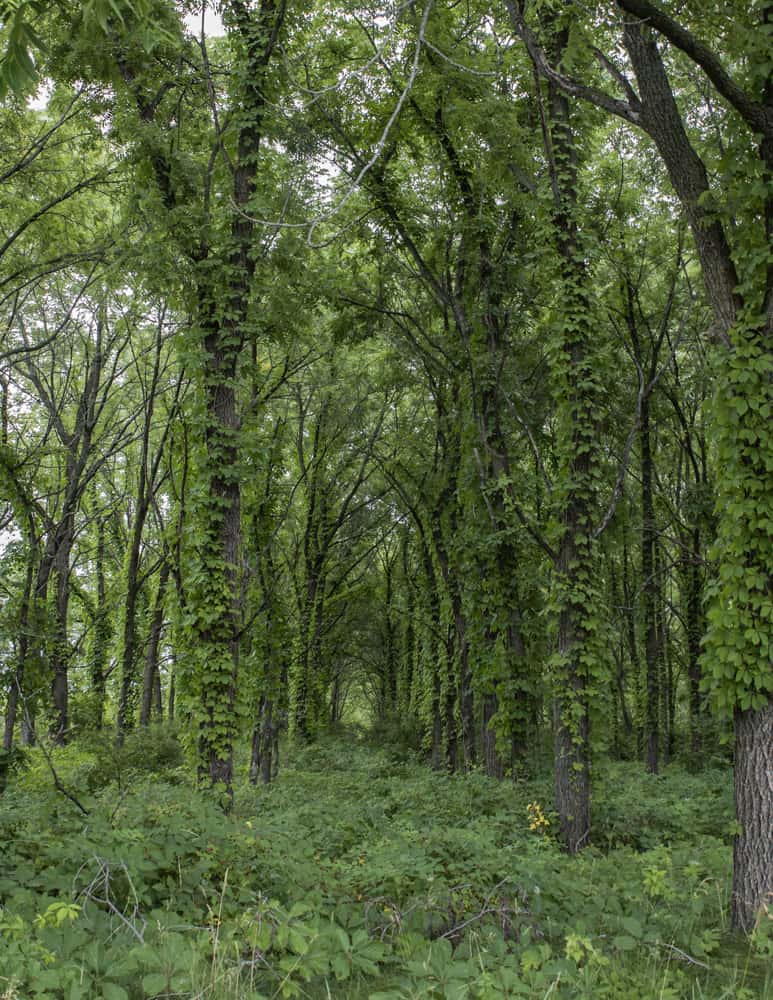
In order to really appreciate the green walnut honey, it's useful to understand what things made with unripe walnuts typically taste like.
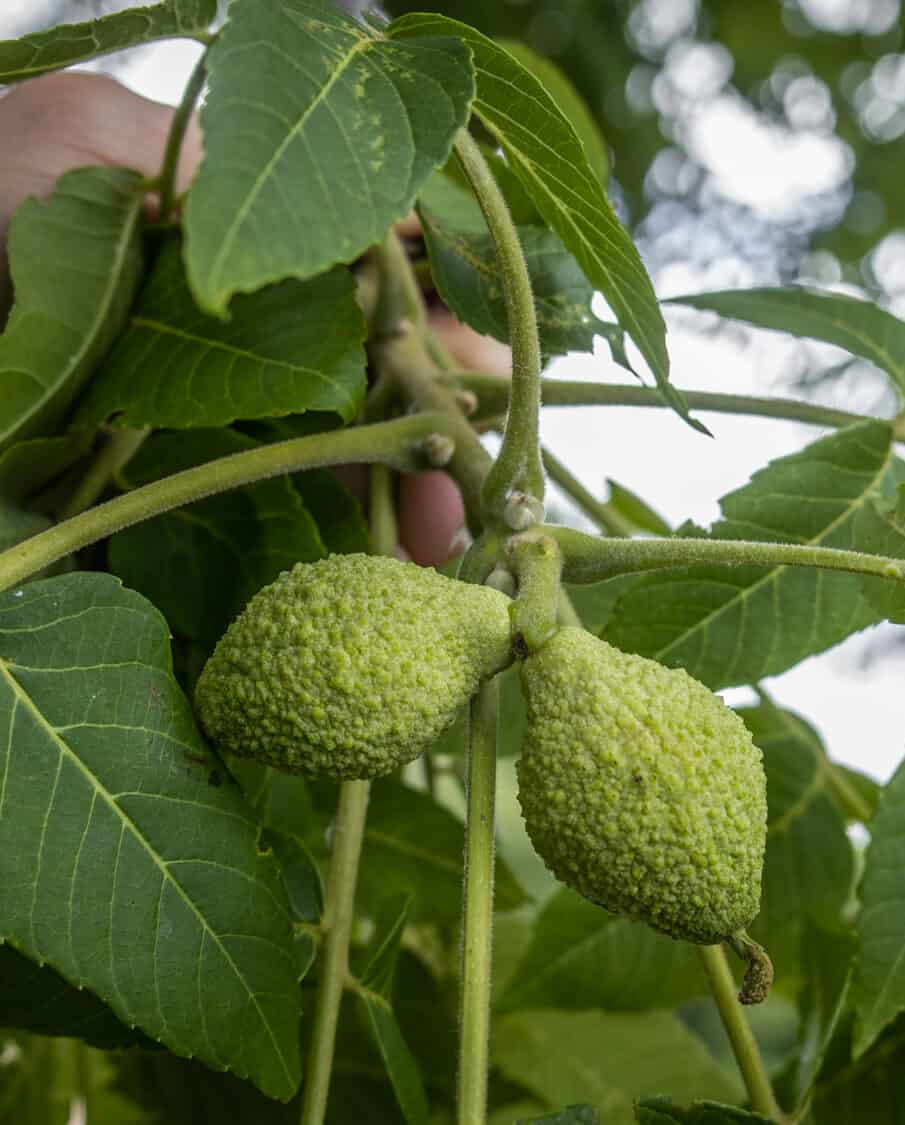
For both Vin de Noix and Nocino, the process goes like this: cut some green walnuts in half, then add them to a mixture of alcohol and spices, allow it to macerate (sit/marinate) for 30 days, then strain, mix with a sweetener, jar, and age to allow the tannins to soften, which takes a long time-6 months at the very least. Saying that the tannins are an obstacle is an understatement.
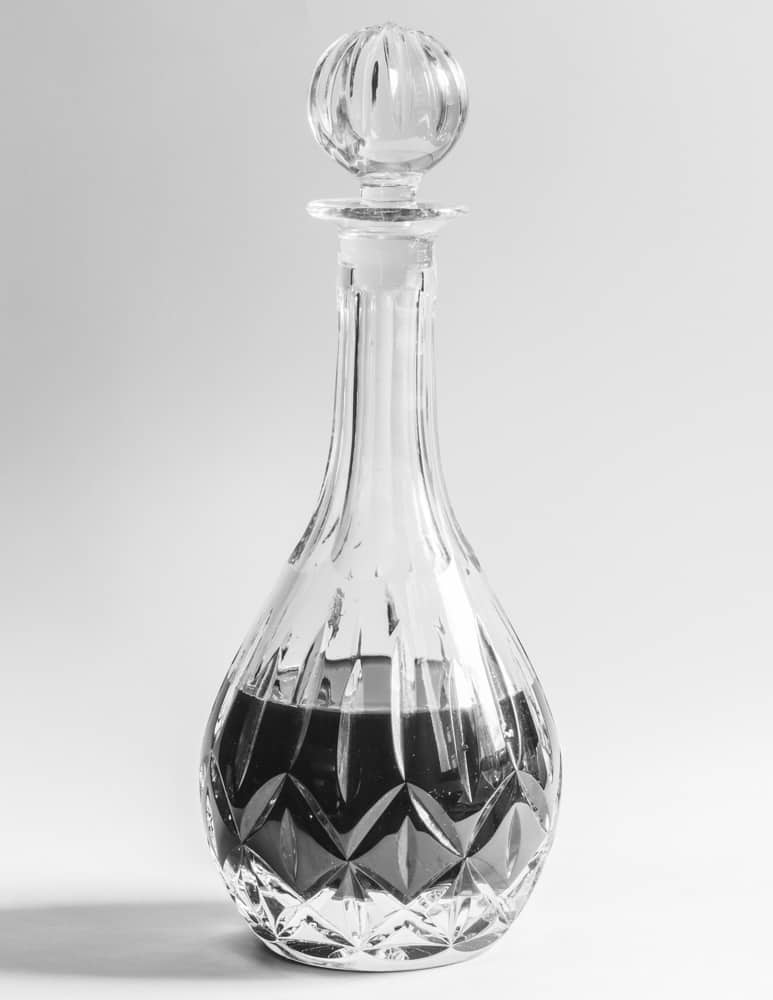
After you crack open a bottle of either walnut liquor, you'll have a reasonably mellow tipple. Nocino is firmly in black licorice-Jägermeister territory, Vin de Noix more of a sweet vermouth. But, as anyone who has handled an unripe black walnut knows, black licorice or Jägermeister couldn't be farther from what the young nuts smell like.
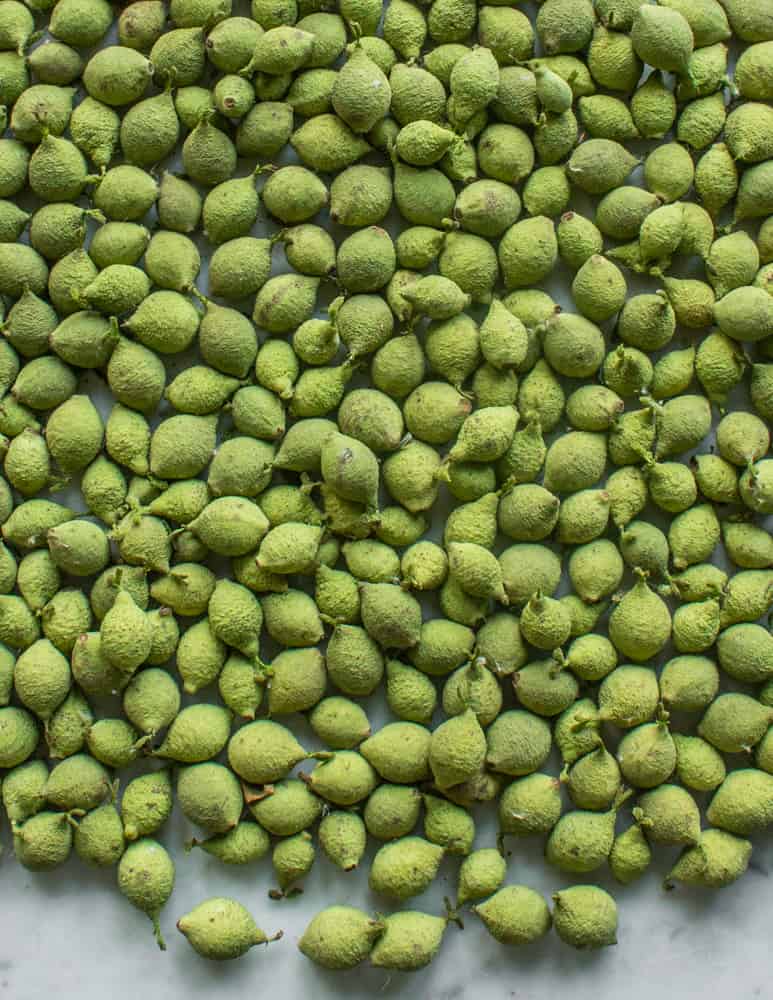
Pluck an unripe black walnut from a tree, or even pick one from the ground the tree has rejected (I usually avoid rejected green nuts for culinary purposes as they may be degraded on the inside) and the first thing you'll notice is an strong, toe-curling aroma of green citrus peels. I've smelled a lot of interesting things over the years, but the smell of the green nuts is one by far one of my all-time favorite scents.
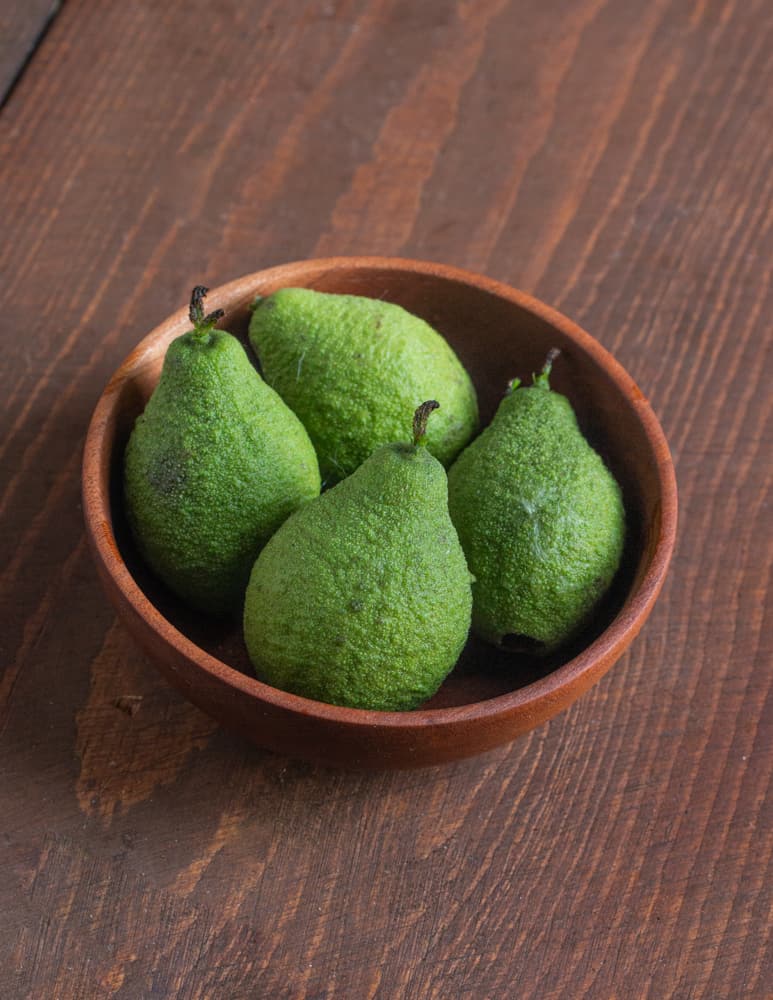
Now, I like Nocino, and I probably like Vin de Noix a little more, but I would be lying if I said that every time I open a bottle I'm not a tiny bit disappointed that the exciting aroma of citrus so rich in the green nuts isn't noticeable at all.
I don't know why the aroma changes after a long sleep in alcohol, but it does, and for years I've been trying to figure out a way, any way at all, to capture the scent of the fresh nuts.
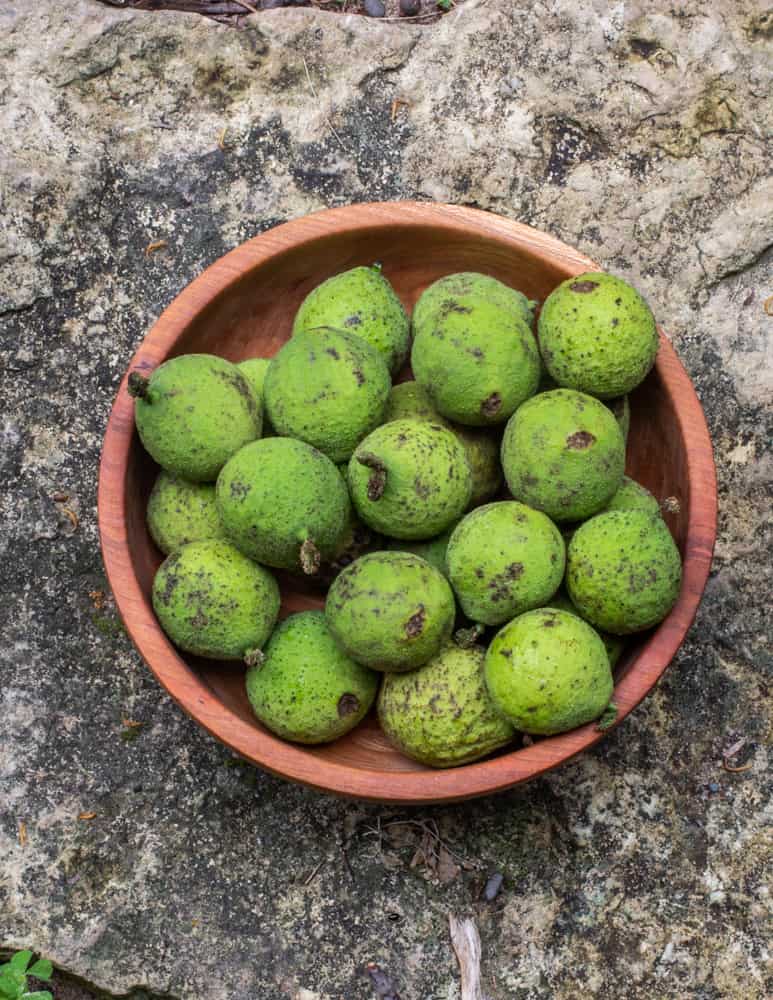
Story goes that a few years ago I was reading an old book, and, unfortunately, for the life of me I now can't remember what it was. I think it was from Ireland, or the U.K., but I could be wrong. Either way, in the preserves section, like many old books I've read from the 18-1900's (Housekeeping in Old Virginia being a great one) there were a number of preparations calling for green black walnuts. One of them was "Green Walnut Syrup". I made a note of the name in a file, and forgot about it for a few years.
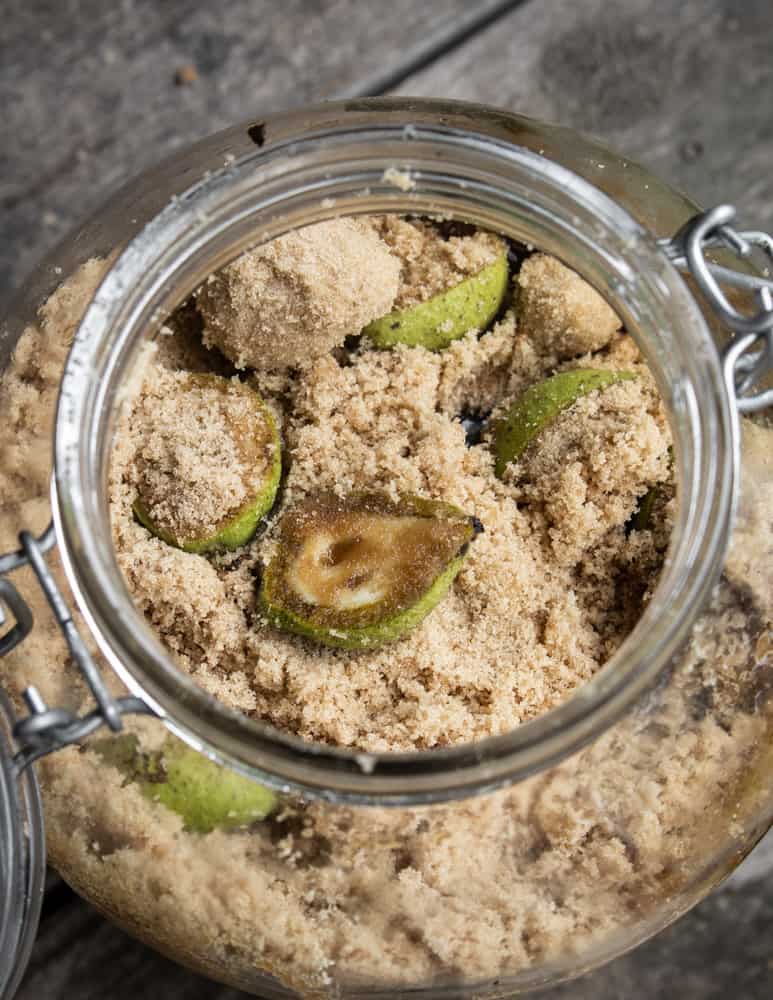
Woodsy Flavor, reduced tannins
I didn't leave any notes on how the original syrup was made, but I have syrup macerations down to a science after making mugolio from every unripe part of every species of conifer tree part I can find in my area. If you're not familiar, naturally fermented syrups made from pine cones are a show-stopper, partly because they give you the unique aroma specific to the conifer species used, without the often terribly strong, astringent aftertaste you would get from chewing on a raw pine cone (side note, unripe cones of Pinus siberica and Abies balsamea are so mild you could almost munch on them raw as a snack).
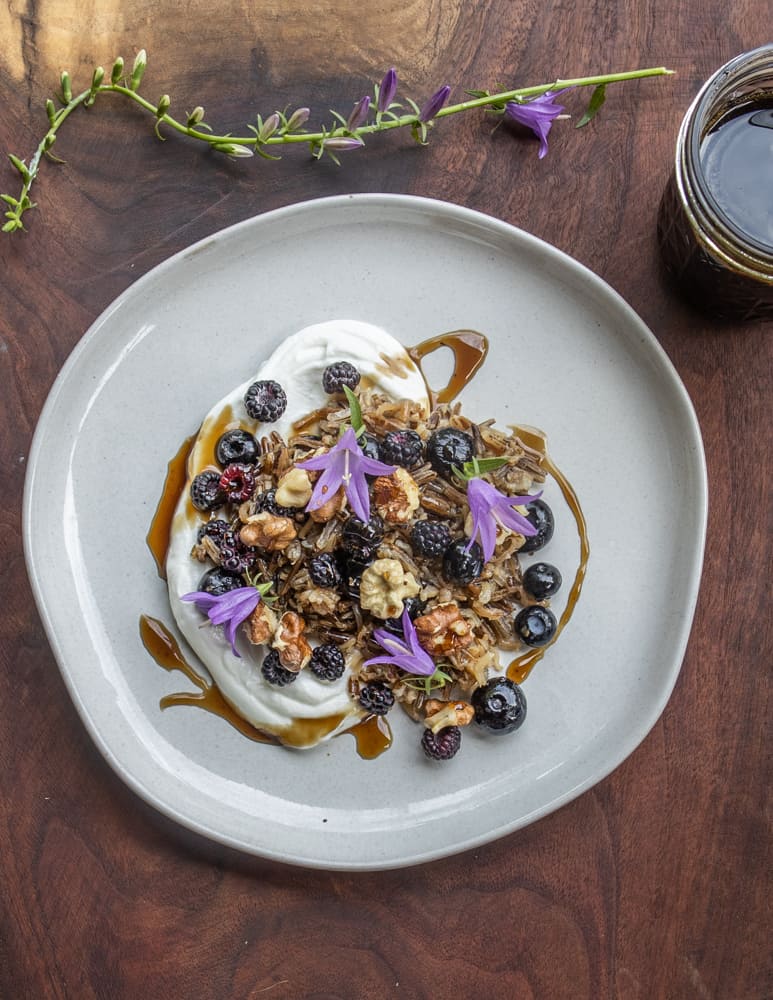
Knowing how incredibly tannic green black walnuts are, I had a hunch that using the same proportions of sugar to unripe black walnuts that I use with pine cones and spruce tips to make mugolio might create a similar product: a thick, non-tannic black walnut syrup, hopefully with a whiff of the citrus aroma I'd been yearning to bottle up and contain since the first time I smelled it.
The finished product will have the taste of green citrus at first, but will mellow with time and develop into something all it's own. The big takeaway of this process, is that this is a way to extract black walnut flavor without having to age out the tannins, and that is pretty darn cool, even if the citrus aroma I've always dreamed of capturing mellows over time. That being said, there will be some tannins in the finished product, but it's nowhere near something like nocino that takes months and months to relax.
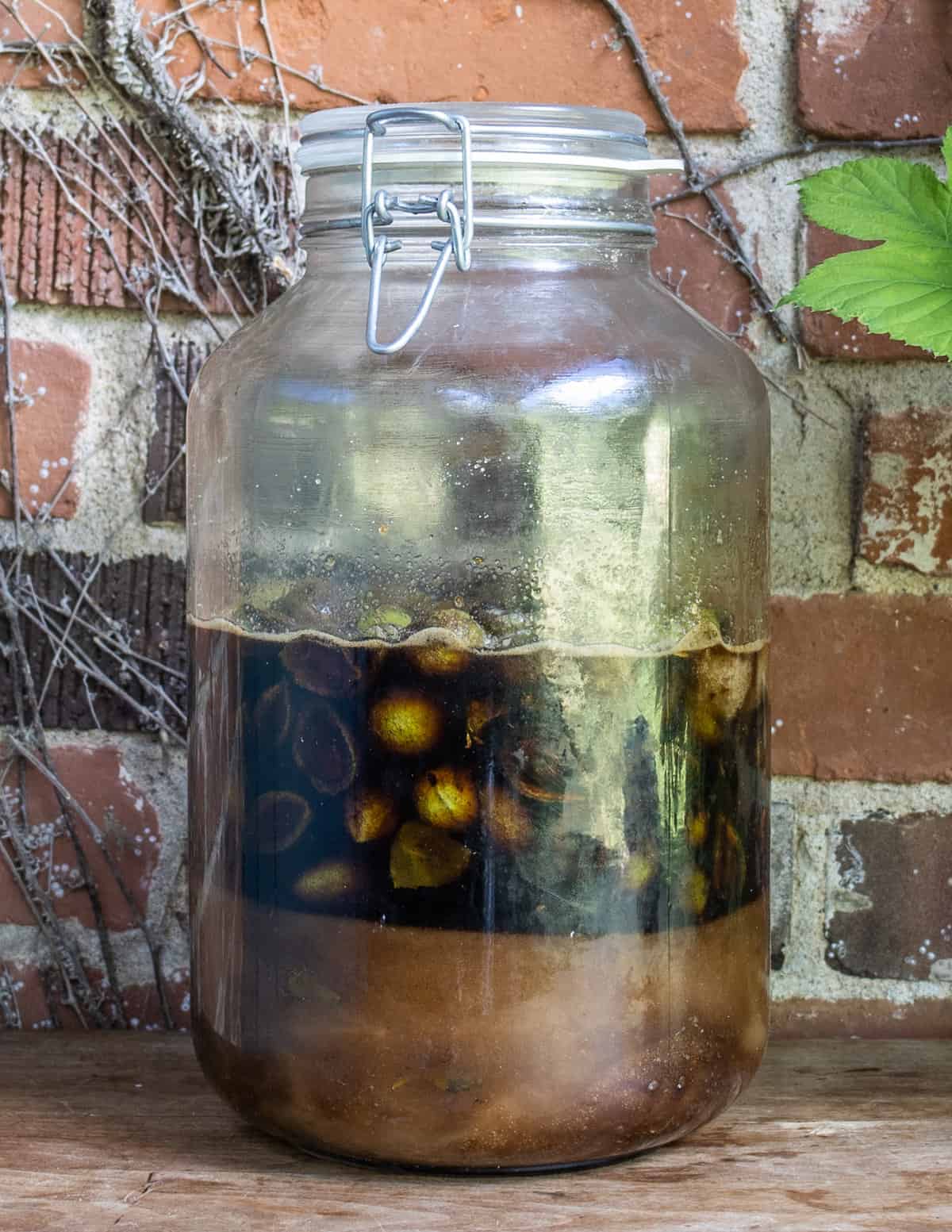
Maceration Magic
The process is exactly the same as for Mugolio. Take your green walnuts, cut them in half, then mix them with twice their weight in good, unbleached sugar, and put them in a container, preferably a glass mason jar so you can watch the show.
After only a day or two, the alchemy begins as the sugar coaxes out what seems an impossible rush of natural water from the green walnuts.
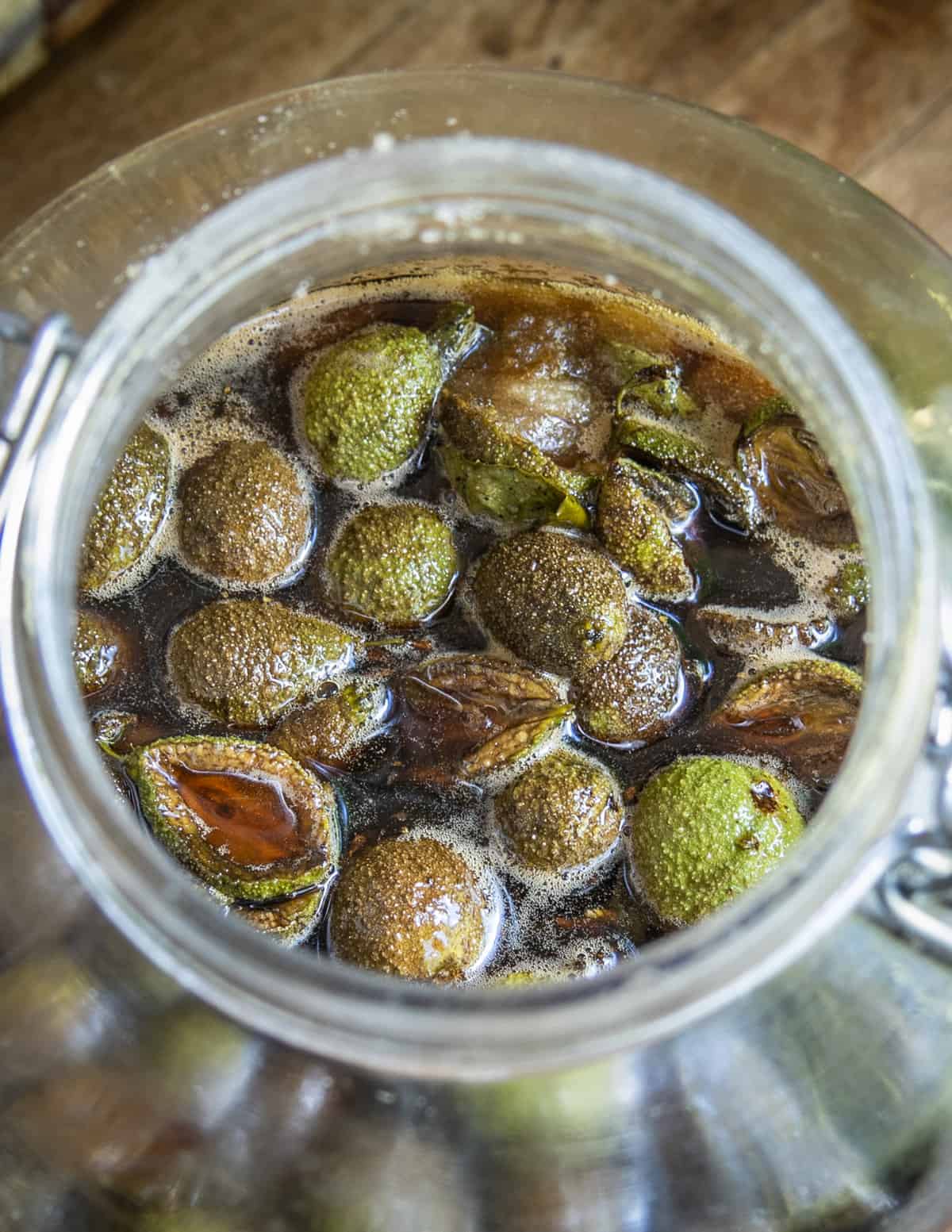
After just a few days, the walnuts will be swimming in liquid, and there will be visible bubbling as the mixture begins to ferment and bubble, pressurizing the contents of the jar and letting out a satisfying hiss when the lid is opened.
After at least 30 days, you scrape out the sugary walnut sludge into a pot, bring it to a boil, then strain, discard the walnuts, and bottle the syrup. Ah Viola.
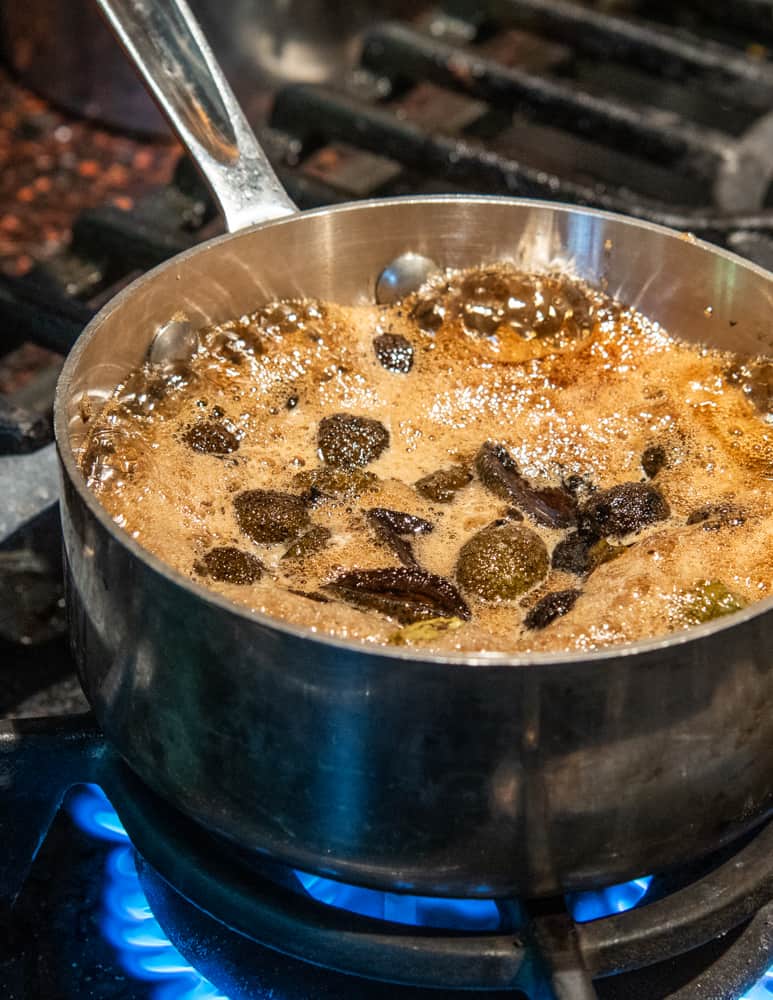

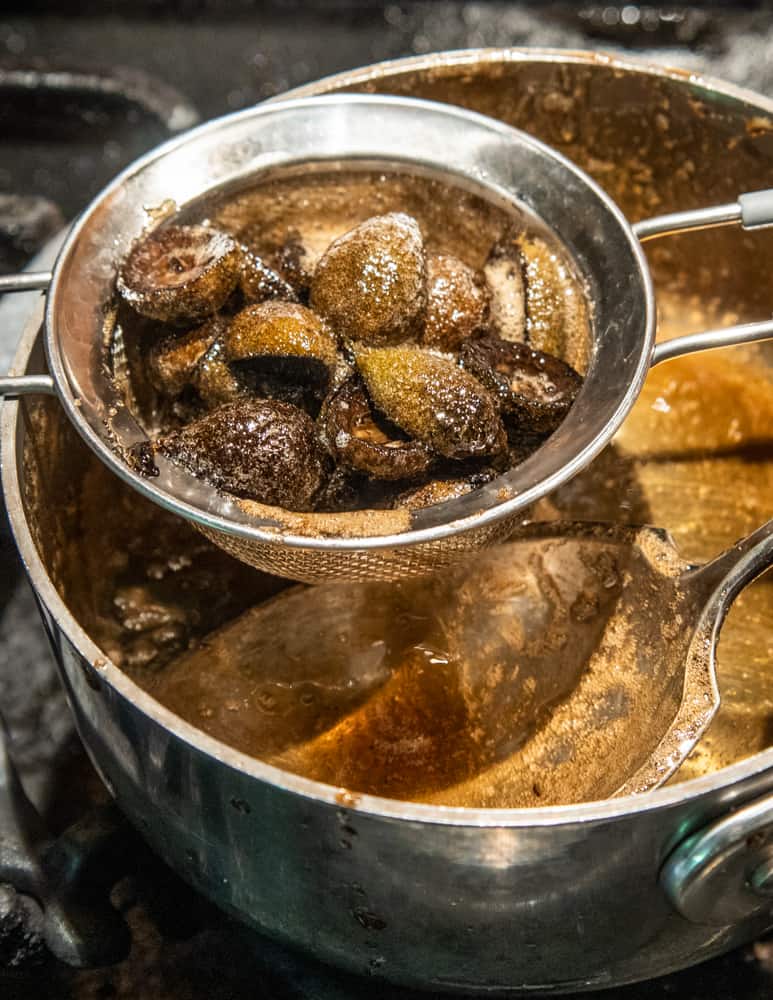
How to use it
While the flavor is not as intense as mugolio, it's still fun. You could use the finished green walnut molasses anywhere you would use maple syrup, and it loves yogurt and creamy soft cheeses. I've also used it for baking in things like granola, which worked, and gave it a darker color.
There's one thing I'm excited about more than any other though, and it's part of what was pushing me to make this is and taste the finished product a bit early. If you follow me on Instagram and Facebook, you may be familiar with the Ida Graves project-my collaboration with a local distillery in Alexandria Minnesota to create distinctly Midwestern liquors flavored with wild herbs and ingredients I harvest.
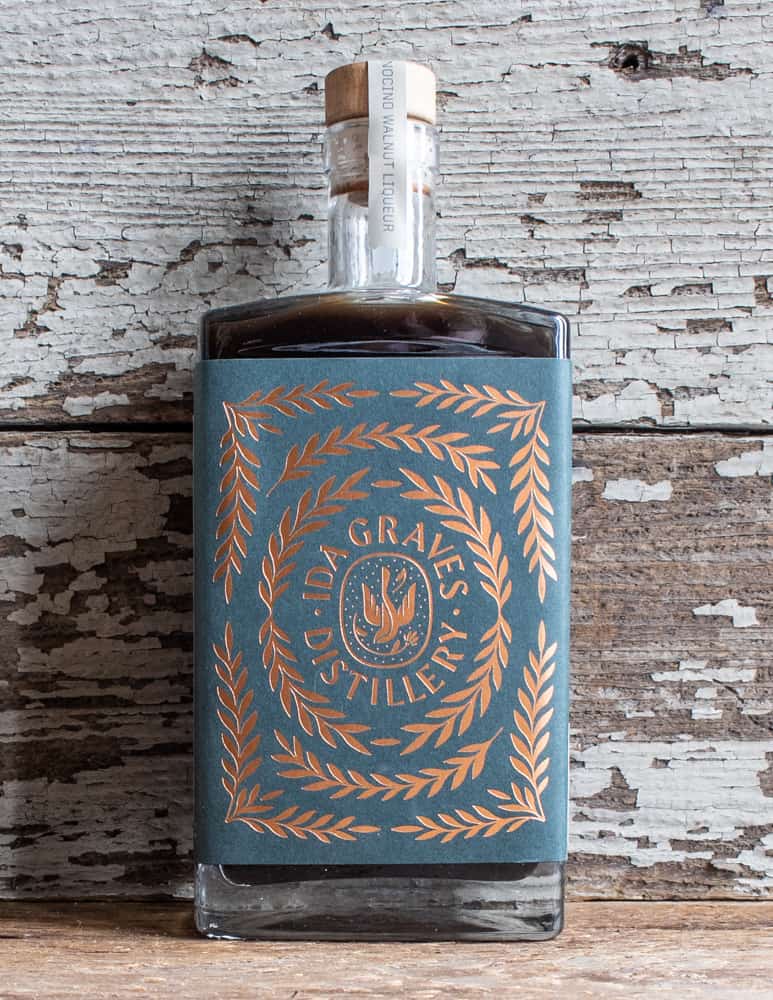
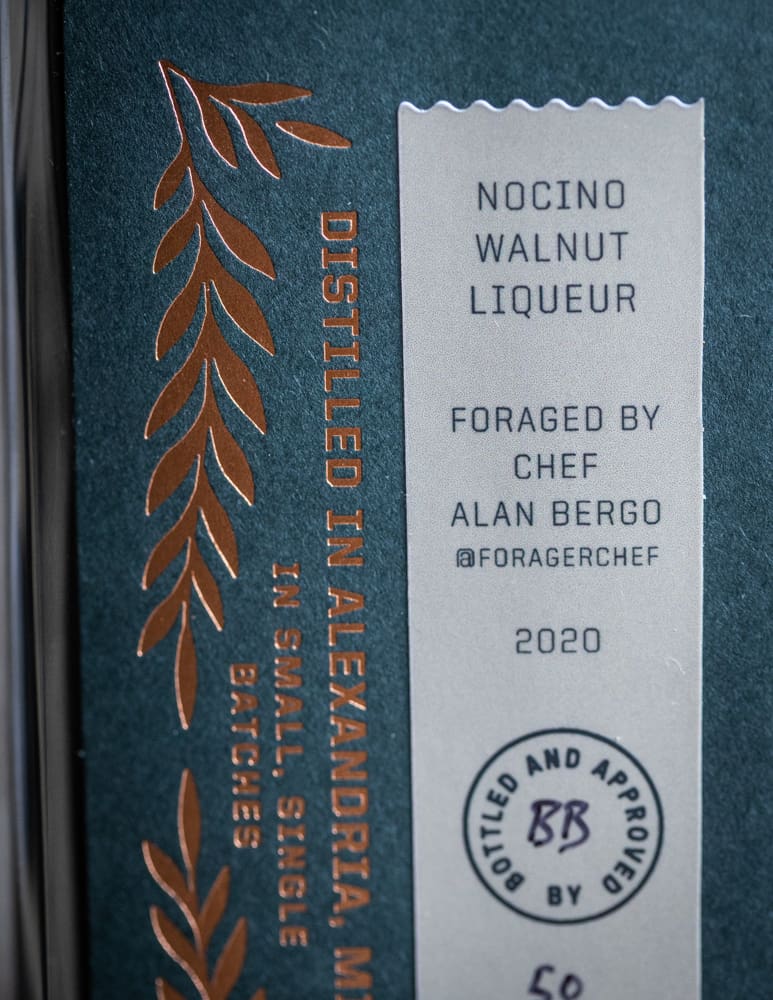
This will be our second year making wild spirits, and, as you may have guessed, nocino is one of them. One of my old chefs from Italy would sweeten nocino with white sugar, I've come to prefer maple syrup over the years.
The scheme I'm hatching here though, is that using black walnut honey to flavor nocino might just be the ultimate version: a study in the flavor of black walnuts only the forest can provide.
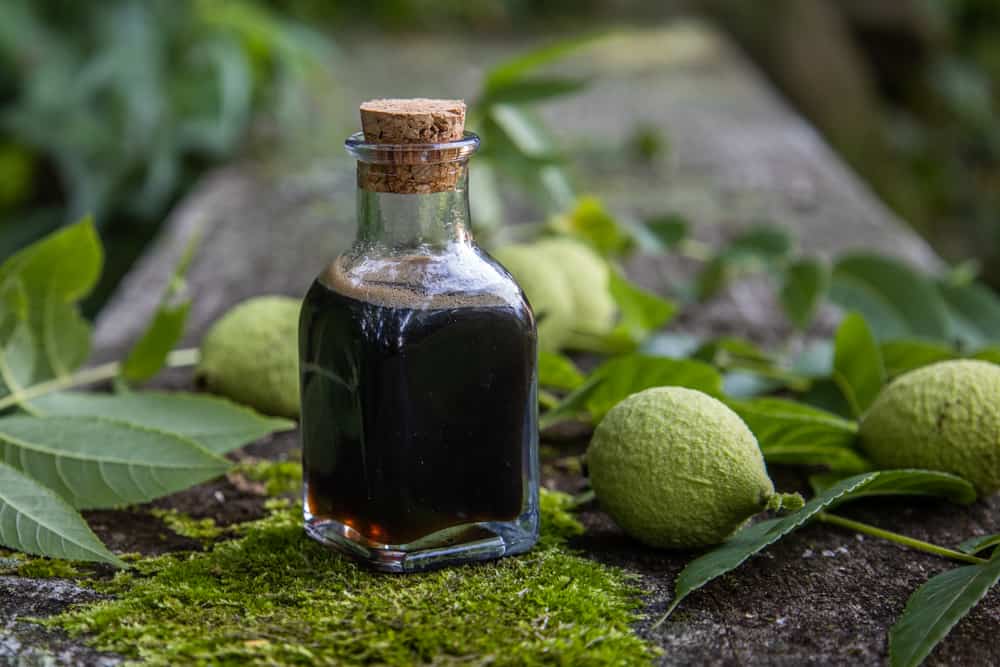
Black Walnut Molasses
Equipment
- 1 Mason jars you'll need two quart jars or one half gallon jar
Ingredients
- 1 lb (roughly 15-22) young unripe black walnuts or butternuts soft enough that they can be cut through with a knife
- 2 lb Brown sugar or Turbinado sugar
Instructions
Harvest and Prep the Nuts
- Harvest unripe black walnuts directly from the tree. Younger is best, smaller than a ping pong ball. Older, more round nuts may be more tannic.
- While it may be tempting to harvest walnuts that have already fallen, you will want to cut some of them in half to make sure they're pearly white and clean on the inside, without any spotting or deterioration. Wash the walnuts and reserve.
- Wearing gloves, cut the walnuts in half using a heavy knife on a cutting board that won't stain. Older recipes often mention crushing or pounding the unripe nuts, which you could also do, but beware of splattering juice.
- Mix the walnut with the sugar, then pack into a container that can accomodate the entire mixture. For the amount listed, you would want a half gallon mason jar.
Maceration
- Allow the walnut-sugar mixture to sit at room temperature or outside for at least 30 days, and up to a few months, opening the jar occasionally to release carbon dioxide as the mixture will ferment. Shake or stir it occasionally to coat the nuts in the fermenting syrup and help prevent mold.
Boiling, straining and storing
- After at least 30 days, scrape the sugary walnut mixture into a non-reactive sauce pot with high sides. On high heat, bring the mixture to a simmer to melt the syrup, turn the heat off and remove the walnuts using a slotted spoon and discard.
Finishing and Jarring
- Bring the syrup back to a brisk simmer, turn off the heat and wait a minute for the foam to settle, skim off the foam. Pour the piping hot syrup into the jars leaving ½ inch of headspace, screw on the lids tightly.
- The cooking process should take about 10 minutes. You're only melting the syrup and getting it hot, not reducing it.
- Process the jars in a water bath, 10 minutes per pint. Some people simply turn the jars upside down and allow to cool and seal. The syrup will last for years and doesn't need to be refrigerated until it's opened. It can be a little tannic at first but mellows as it ages.

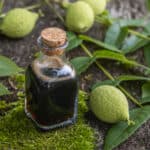
Shaun
Hi there and thank you for this recipe! I made it a couple of years ago after an online presentation you did and I love it over parfaits for breakfast! Unfortunately, a good portion of each jar has crystalized and is really difficult to remove. For the chunks of crystals I have been able to get out of the jar, I pound them down a bit and use as a sticky sugar but am having tough time getting much of it out. Wondering... have you had this happen as well? Do you have any tips regarding the crystals?
Thank you!
Alan Bergo
I haven't had this happen, it could happen if you cook the syrup too long. pour a little hot water into the jars to loosen the syrup, then put the crystalized sugar and the water into a small pot, bring to a simmer to melt and reduce until you like the consistency.
Shaun
Thanks for the reply! I'll make a note for next time not to cook it so long. I've used the liquid from 2 of the 3 jars I made and only the crystals remain... stuck to the jar. Hopefully this will release them. Thank you!
Ethriam Cash Brammer
My batch molded, and I scraped it off. Then the mold returned. Is the batch ruined? Or, does boiling the molasses make it safe to use?
I am getting conflicting opinions...
Alan Bergo
If it molded you may not have watched it close enough. It will help to stir it regularly and keep an eye on it. Once you bring the syrup to a boil it's safe, the only problem with a little white mold here and there with this is that if left unchecked, it could harm the flavor.
Finn
If using the older green walnuts, when they are more smooth, should you use just the hulls or the nut as well?
Alan Bergo
Hi Finn. I think you may have misunderstood what I mean by older nuts, or maybe I haven't phrased it as clearly as I should. This is only to be made with young, unripe walnuts where the shell of the nut has not yet formed. If you can't cut through the whole green nut easily it should not be used.
I P
I have a solution of water and black walnuts liquid.Was meant to be processed differently(,but now it is black walnut water. It was put to boil and no sugar added. First: pieces of bl.walnuts were soaked in water for 9 days and changed the water, last day we dumped the first water after simmering.Then filled fresh water and cooked for 25 min.Now the liquid is to dark/ black and taste bitter.Is it normal?
Next question can we use to take internally against parasites?
What else would you make with it?
Alan Bergo
Hello, I'm not qualified to give medical advice, but it is normal for liquid like that to taste bitter.
DA
Great recipe, but I somehow ended up with less than a quart, rather than half a gallon. Not sure what happened...
Alan Bergo
If you read the recipe it states that it makes 3.5 cups.
DA
Whoops, you're right. I got confused because under "equipment" it says 2 quart jars or 1 half gallon jar, but I guess that's just for the maceration phase.
Oran Lichtman
Absolutely wonderful recipe. I tried this for the first time last year letting the walnuts age for a month in the sugar. I found that when I tried the molasses right when it was cool and it was too tannic for my taste. So I let it sit for another couple months, three in total, and the flavor mellowed out into an almost creamy vanilla like flavor. Incredibly delicious and makes an excellent mixer for drinks, especially darker liquors like rum.
Alan Bergo
Thanks Oran. Yes, I've been using it to flavor iced tea. Works great.
Cyd Weeks
Hey there and thank you so much for this recipe! I have 3 batches going and sadly all three have a small amount of white fuzzy mold growing on top. Have I lost them all or is there something I can do to salvage them?
Thank you!
Alan Bergo
I've never had any mold on any batch I've made. Make sure to stir them occasionally to coat the nuts in the fermenting syrup. A little white mold is harmless, you can pick it off and finish the recipe as directed. The only issue with it is if you forget about it for, say, another month and the mold spreads, which will eventually harm the flavor.
Velma
Also if anybody ever finds that original old recipe, I'd love to see it!!
Velma
Just noticed some green black walnuts tonight and wondered how making them into mugolio would go - glad to read that it's so successful! I'd planned to try regardless but you've equipped me with a ratio to use, thank you.
Sophie
Is it necessary to boil the syrup at the final step? Would it be edible raw?
Thank you!
Alan Bergo
Yes it's absolutely necessary. If you don't the sugar on the bottom won't dissolve. It's edible raw, yes. If you're thinking about fermentation benefits I recommend sauerkraut and curtido.
Ian Hanson
Fellow Minnesotan, some time reader and first time commenter.
I've been waiting to pull off any recipe with unripe walnuts for some time. Enjoyed black walnut syrup (maple style) last year and am watching the nuts for the right moment this year, having shown up late the last couple. Ours (SE MN) aren't as bumpy as the images, but hoping there's no loss in picking them a bit early as opposed to too late.
Really excited about the Ida Graves projects and would like to taste more of the product line. As a photographer, I've wanted to partner taking their/your creations back to where they were foraged to create some compelling images. Valid idea or have you already done that, the imagery on yours and their sites are fantastic already.
Thanks for sharing and can't wait to try this soon!
Alan Bergo
Hey Ian. I’m currently packing my house to move back to MN. Can’t wait. Your nuts should be fine. You want to pick them now if you’re around the Twin Cities though. Ida Graves and I no longer work together. It was a fun project though-one year I gathered 300 lbs of green walnuts just for the nocino.
Ian Hanson
I’m SE MN, Rochester, what changes in the metro, something concrete jungle related? And love to hear that MN is drawing you back in, surprised you could have ever left! 😉
Alan Bergo
I'm just closer to friends and family and it makes my job easier.
Kylee
How long does it last once the jar has been open?
Alan Bergo
In the fridge it would last forever, basically. It's a fermented syrup and you could literally preserve things by immersing them in it.
Jana
The link I clicked to get to this page said black walnut honey and honey is mentioned a time or two. I would like to sweeten the nocino with honey, any suggestions? I made nocino last year and used sugar, it turned out to be very tasty. I would like to not use sugar. I may try maple syrup, too.
Alan Bergo
Yes I’m perpetually indecisive. Originally I called this black walnut honey, but molasses is a better description of the finished product. You can use honey or maple syrup. The finished product will be looser, but you can adjust the consistency through cooking/reducing.
Wes
Is there a reason you specify brown sugar? Would plain cane sugar be too bland?
Alan Bergo
It's just a personal preference for making fermented syrups like this. With some ingredients the extra liquid in it is needed, and the brown sugar also gives a better color. With green walnuts, they contain so much liquid that it doesn't matter. Feel free to use white sugar if you want. You'll still get a good color since the walnuts stain anything and everything.
Danielle Ceciliano
I made this for the first time tonight. I also made your Nocino recipe, and threw in a couple leftover cloves from it into this molasses one. I hope I didn't mess anything up! About how much syrup will this produce once it's finished? Thank you!
Alan Bergo
Danielle, the yield is listed in the recipe. about 3.5 cups.
Travis
I made this a few weeks ago but couldn't fit it all into two jars so ended up using a small third one. The first day or two, there was so much gas (and I was storing upside down for some reason) that they leaked. But since then, there's been hardly any gas produced. I cracked them open after about 8 or 9 days of being sealed, and there was no sound of gas escaping at all. Did I mess up somehow?
Alan Bergo
Hi Travis, no, there will be carbon dioxide at first, but it should mellow over time. You're totally fine, this is a very safe, easy recipe and just about impossible to mess up, well, unless you store the jars upside down and all the syrup leaks out. Let me know how it works for you.
Travis
Finally cooking this and I was wondering about the cook time. Am I correct in reading the recipe that you bring to a simmer, cool, remove nuts, then bring to a simmer again, and can? How long should you let it simmer?
Alan Bergo
Hey Travis. I gave the cooking step a quick edit, let me know if that makes sense.
Hannah M
Are juglones a concern?
Alan Bergo
No.
DA
Great recipe, but I somehow ended up with less than a quart, rather than half a gallon. Not sure what happened...
Meri D’Ulizia
Thank you so much , this is wonderful news